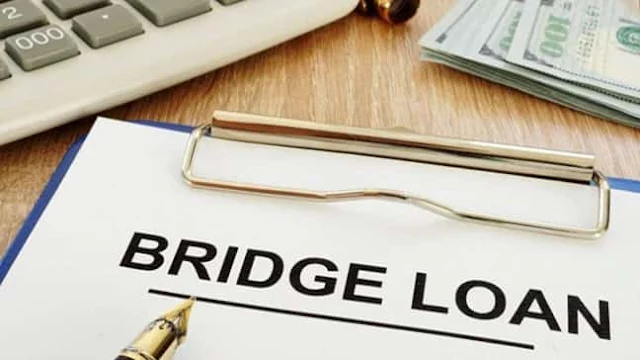A bridge loan is a type of short-term loan that is taken out in order to bridge the gap until permanent financing can be obtained or until an existing obligation can be paid. Because it provides immediate cash flow, the borrower is able to meet their existing financial obligations. The interest rates on bridge loans are typically quite high, and the borrower is typically required to back the loan with some form of collateral, such as real estate or the inventory of a company.
These loans, which are frequently utilized in the real estate industry and are also known as bridge financing or bridging loans, are short-term in nature.
• A bridge loan is a type of short-term financing that is utilized until an individual or company secures permanent financing or eliminates an existing obligation.
• Although bridge loans are most commonly associated with the real estate industry, many other types of businesses also make use of them.
• Homeowners who are waiting for the sale of their current residence are eligible for bridge loans, which can be put toward the purchase of a new house.
The Process of Obtaining a Bridge Loan
Bridge loans, which also go by the names interim financing, gap financing, and swing loans, are used in situations in which financing is required but is not yet available. These loans bridge the gap. Bridge loans are used by both individuals and businesses, and the terms of these loans can be modified to fit the borrower's needs in a variety of contexts.
Homeowners who are waiting for the sale of their current residence can purchase a new property with the assistance of bridge loans. While they are waiting for their current home to sell, borrowers can use the equity they have built up in their existing home to make the down payment on a new home they want to buy. A bridge loan provides the homeowner with some additional time and, most of the time, some peace of mind while they wait for the closing of their primary loan. On the other hand, the interest rates on these loans are typically higher than those on other types of credit facilities, such as a home equity line of credit (HELOC).
The majority of the time, lenders will only provide real estate bridge loans to borrowers who have exceptional credit and reasonable debt-to-income (DTI) ratios. Bridge loans combine the mortgages of two properties into one, providing the buyer with financial flexibility while they wait for the sale of their previous home. However, in most instances, lenders will only offer real estate bridge loans worth 80% of the combined value of the two properties. This indicates that the borrower must have substantial home equity in the original property or excess cash savings on hand in order to qualify for the loan.
When businesses are awaiting long-term financing and require money to cover expenses in the meantime, they often turn to bridge loans to meet their financial needs. Take, for instance, a business that is currently undergoing a round of equity financing with a projected closing date of six months from now. It is possible that it will choose to make use of a bridge loan in order to provide working capital in order to cover its payroll, rent, utility costs, inventory costs, and other expenses until the round of funding is successful.
When it comes to real estate bridge loans, individuals who have not yet paid off their mortgage are forced to make two payments: the first payment is for the bridge loan, and the second payment is for the mortgage on the previous home. This continues until the new home is sold.
Example of a Bridge Loan
In 2016, Olayan America Corp. pursued the acquisition of the Sony Building in New York City. In order to finance the transaction, the company obtained a bridge loan from ING Capital. Olayan was able to swiftly close the deal on the Sony Building thanks to the expeditious approval of the short-term loan. Before Olayan was able to secure more reliable and long-term funding, the loan allowed him to cover some of the costs associated with the purchase of the building.
Bridge Loans vs. Traditional Loans
The application, approval, and funding processes for bridge loans are typically much more expedited than those for traditional loans. However, in order to compensate for the ease of use, the terms of these loans are typically rather brief, the interest rates are typically quite high, and the origination fees can be quite substantial.
Borrowers typically agree to these terms because they require easy and quick access to funds in order to fulfil their financial obligations. They are prepared to pay high interest rates because they are aware that the loan has a short term and they intend to pay it off quickly with financing that has a low interest rate and a longer term. In addition, the majority of bridge loans do not have any penalties for early repayment.
What are the advantages of getting a bridge loan?
Bridge loans are a source of cash flow for the short term. For instance, a homeowner can use a bridge loan to buy a new home before selling their current one by taking advantage of this type of loan.
What are some of the drawbacks associated with bridge loans?
The interest rates associated with bridge loans are typically higher than those associated with traditional loans. In addition, if you still have a mortgage while you are waiting to sell your home, you will be required to make payments on both of your loans.
How do I determine if I am eligible for a bridge loan?
You will need to have an excellent credit score in order to qualify for a real estate bridge loan. Lenders favor borrowers who have low debt-to-income ratios (also known as DTI ratios).
